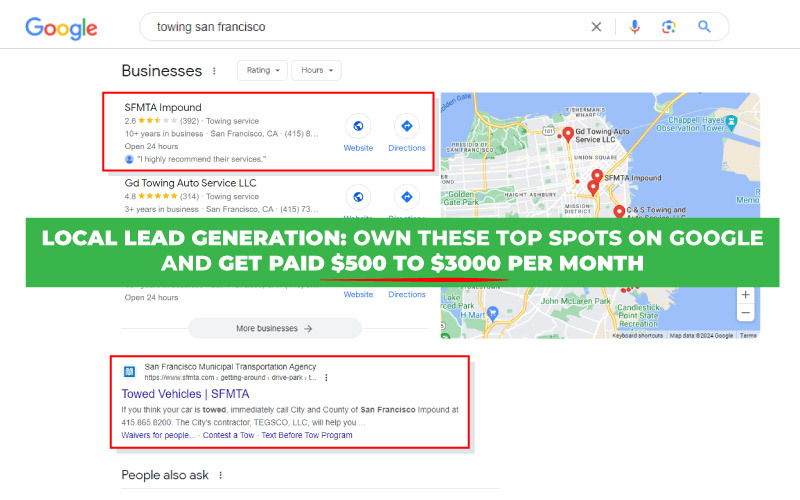Performance Marketing vs Growth Marketing: Differentiating Paid and Organic Advertising

The major differences and similarities between performance marketing vs growth marketing are:
| Performance Marketing | Growth Marketing |
|---|---|
| Focuses on short-term ROI goals | Focuses on long-term revenue gains |
| Converts bottom-funnel leads | Considers full-funnel customer journeys |
| Tracks quantitative KPIs | Tracks qualitative metrics |
| Uses paid channels | Uses organic channels |
| Best for sales-based brands | Best for customer-centric businesses |
Performance marketing entails using paid strategies and channels to achieve quick results. These include affiliate marketing, PPC advertising, and email marketing. This model drives a short-term boost in brand conversions, sales, and ROI. In contrast, growth marketing involves organic advertising methods to acquire and engage customers. These include viral marketing, SEO, and content marketing. It improves customer loyalty, brand credibility, and revenue gains.

Joey Stevens, paid media director at The Social Shepherd, states that performance marketing relies on conversion-focused ads. It optimizes for end goals like PDF downloads and holiday bookings. Alternatively, growth marketing focuses on expanding reach and engagement. Startups or companies with low brand visibility often use this method. He suggests using both strategies to reduce cost per acquisition and improve conversion rates.
Sales-focused businesses adopt performance marketing tactics to increase customer purchases. They optimize their online campaigns by monitoring key performance indicators like click-through rates. In fact, paid ads generate a 200% ROI on average (WordLead). In contrast, growth marketing focuses on customer lifetime value and retention. Marq reveals that 35% of businesses experience 10% to 20% revenue growth because of consistent brand presentation.
The similarities between growth marketing vs performance marketing are:
- Focuses on generating revenue
- Utilizes data analytics for making decisions
- Prioritizes customer acquisition
- Maximizes marketing tools and platforms
- Have scalable advertising processes
I’ve used growth and performance marketing models to improve my monthly recurring revenue. However, each method requires either a significant budget or daily content creation. I’ve found that local SEO avoids these issues.
This article discusses the main differences and similarities between performance vs growth marketing. We examine social media marketing and native advertising. We also feature testimonials from brands like Myfix Cycles and Slack. Finally, we go into how local SEO is the best online marketing method for business scalability.
5 Differences Between Performance Marketing vs Growth Marketing
Performance Marketing
Main Focus
It focuses on short-term business and ROI goals. Performance marketing drives actions and conversions through a campaign-driven strategy.
Marketing Funnel
Performance marketing drives immediate sales by converting bottom-funnel customers.
Metrics
It tracks the success of marketing spending. Some of the main KPIs in performance marketing are:
- Conversion Rate (CR)
- Customer Acquisition Cost (CAC)
- Return on Ad Spend (ROAS)
- Cost Per Click (CPC)
- Click-Through Rate (CTR)
Marketing Channel
Performance marketing uses paid channels, such as PPC and affiliate marketing.
Use Case
It is best for industries like e-commerce, financial technology, and retail.
Growth Marketing
Main Focus
It focuses on long-term business, customer, and revenue gains. Growth marketing uses engagement and retention strategies.
Marketing Funnel
Growth marketing generates revenue by considering the entire customer journey.
Metrics
It monitors qualitative metrics to determine long-term growth and success. Some of the main considerations of growth marketing are:
- Customer Targeting
- Customer Journey Mapping
- A/B Testing
- Content Strategy
- Customer Retention
Marketing Channel
Growth marketing combines organic and paid channels like SEO and social media marketing.
Use Case
It is great for subscription-based services, SaaS, and startups.
What People Say About Performance Marketing vs Growth Marketing

Myfix Cycles, a bike retailer, generated $15 in ROI for every $1 spent on paid ads. It used Facebook Ads to retarget website visitors, cart abandoners, and frequent buyers. Performance marketing helped it achieve a 6.38% click-through rate and a 1529% ROI.
Nielsen reveals that 70% of global marketers plan to increase their performance marketing spend. However, one Redditor said that performance marketing is a “quarterly KPI hamster wheel.” Your previous campaign gets affected if the next marketing ad doesn’t perform well. Another Reddit user mentioned that performance marketing has a channel cap. Marketers will eventually use radio, TV, and out-of-home advertising.



Slack, a popular software company, grew to a $3+ billion business with growth marketing. It generated user interest through beta testing and word-of-mouth marketing. Then, the company used an ungated free trial and “viral loops” to improve brand awareness. Now, Slack has over 10 million daily active users (DAU) worldwide.
According to Forbes, a 5% improvement in customer retention leads to a 25% to 95% jump in profits. However, one Redditor stated that growth marketing is a “high risk, high reward” model. Growth marketers are held accountable for campaigns that don’t generate revenue. Sometimes CEOs set unrealistic long-term growth goals.

What Type of Digital Marketing is the Most Profitable: Performance or Growth?
Performance marketing is a type of digital marketing that is more profitable than growth marketing in the short term. It provides immediate ROI through on-demand advertising campaigns. WordLead states that paid ads generate an average $2 return for every $1 spent. Performance marketing is best for industries that need direct sales, like e-commerce. It’s highly profitable for time-sensitive events like holiday sales and seasonal promotions. You can adjust or end marketing campaigns based on your budget and ongoing ad costs.
Alternatively, growth marketing is more profitable than performance marketing in the long run. It contributes to a business’s overall profitability through:
- brand building
- customer engagement and loyalty
- organic acquisition
Growth marketing addresses customer attrition while improving customer lifetime value. Most startups use this method to expand brand awareness and establish a customer base. As per MarketingWeek, 60% of business profits come from brand building. Growth marketing involves free channels like social media marketing, SEO, and content marketing. Some of the best growth strategies are loyalty, community engagement, and referral programs.
Do Performance Marketing and Growth Marketing Have Similarities?
Yes, performance marketing and growth marketing have similarities. Both models:
- focus on revenue generation.
- focus on acquiring customers.
- maximize data for decision-making.
- use marketing technology.
- have scalable and repeatable processes.
Performance and growth marketing entails creating online campaigns that drive business ROI. Both models use advertising strategies that attract and engage target audiences. This method improves customer acquisition and retention. Both marketing models also use technologies like Google Analytics and CRM systems. These marketing platforms enable streamlined, data-backed operations.
Performance Marketing Pros and Cons
| Performance Marketing Pros | Performance Marketing Cons |
|---|---|
| Easy to calculate ROI and optimize campaigns in real time | Possibility of maxing out all available performance marketing channels |
| Only pay for successful clicks and conversions | Low profit due to high ad spending |
| Ability to set many target audience parameters (Ex: demographics, geographic, behavioral, etc.) | Susceptible to fraudulent transactions like bot traffic and ad fraud |
| Opportunity to scale by increasing ad budgets and diversifying marketing channels | Possibility of ceasing marketing operations because of growing ad costs |
| Processes can be automated | Sales-based campaigns can hinder genuine customer relationships and brand building |
Some types of performance marketing are:
- PPC Advertising. This method involves paying for every brand ad click. Advertisers use high-ranking keywords and engaging content to drive customer action.
- Affiliate Marketing. It uses commissions as a monetary incentive for every successful referral or sale. In this model, businesses partner with affiliates to promote their products and services.
- Email Marketing. This strategy utilizes individual or series emails to capture a target audience’s interest. Brands pay for successful clicks or redirects to their website.
Performance marketing is a method where advertisers only pay for successful outcomes. These include sales, leads, or clicks. It is a results-driven marketing strategy that relies on measurable metrics like Conversion Rate and Cost Per Click. Performance marketers drive revenue by creating and launching on-demand advertisements. They partner with ad platforms, influencers, affiliate marketers, and more.
Growth Marketing Pros and Cons
| Growth Marketing Pros | Growth Marketing |
|---|---|
| Offers sustainable business and marketing growth | Involves technical growth marketer skills and resources |
| Builds brand credibility and promotes customer trust | Possibility of misallocating marketing efforts because of interlapping metrics |
| Opportunity to drive customer referrals through word-of-mouth marketing | Takes time to see campaign results |
| Uses customer experiences to optimize marketing campaigns | The risk of customer disengagement due to intrusive marketing tactics |
| Maximizes organic marketing to reduce advertising costs | Constantly adapting to new market trends and customer behaviors |
Some examples of growth marketing are:
- Content Marketing. It maximizes high-quality, informative, and relevant content to engage potential customers. This strategy helps brands attract and retain their target audience.
- SEO. This organic marketing model optimizes business websites to improve search engine ranking. It drives relevant site traffic and improves domain authority.
- Social Media Marketing. This method utilizes social media platforms to promote brand credibility and customer trust. It uses social media posts, comments, and communities to engage with potential customers.
Growth marketing is a long-term marketing model that focuses on full-funnel customer journeys. It involves engaging, converting, and nurturing your target market. This marketing model improves brand awareness, reputation, and revenue. Growth marketers identify business scalability opportunities and turn them into optimized campaigns. They use sustainable channels like social media and search engines. Growth marketing reflects Dave McClure’s Pirate Metrics called the AARRR framework:
- Acquisition
- Activation
- Retention
- Referral
- Revenue
Local Lead Gen: A Combination of Performance and Growth Marketing?
Local lead generation is a mix of performance and growth marketing. It uses local SEO to improve search engine ranking while strengthening customer relationships. Businesses only pay monthly for renting a lead gen site or for every successful lead referral. While performance marketing drives quick profits, not all paid ads generate the same result. In growth marketing, you need to engage with your audience constantly to retain them.
Local lead gen is better than growth and performance marketing because:
- it targets specific local areas. You focus on high-value leads that are ready to buy local services. It is less competitive than ranking for global keywords.
- it is less complicated and has repeatable processes. You identify in-demand local niches and build websites for each one. Then, you rank them on search engines like Google through SEO. Once you hit the first page of the SERPs, you generate unlimited leads.
- it generates higher profit margins. Since you’re using free search traffic to get leads, you spend less on advertising costs. Plus, ongoing expenses are minimal once your sites rank. You earn around 80% to 95% in profit margins.
- it provides recurring revenue. You earn monthly passive income from each local lead gen site you make. You just have to rent them out to local businesses needing more customers. Plus, you can build many websites to grow your income.

I’ve used performance and growth marketing to scale my online business. However, I discovered that each marketing strategy has its limitations. That’s why I switched to local lead generation and maximized its income and growth opportunities. I’ve been making over $50,000 monthly since 2014. Local lead gen surpasses what product growth managers or performance marketing companies can do.

Follow Me
Ippei Kanehara
Founder/CEO
$52K per month providing lead generation services to small businesses
Ippei.com is for digital hustlers, industry leaders and online business owners.
His #1 online business recommendation in 2024, is to build your own lead generation business.
